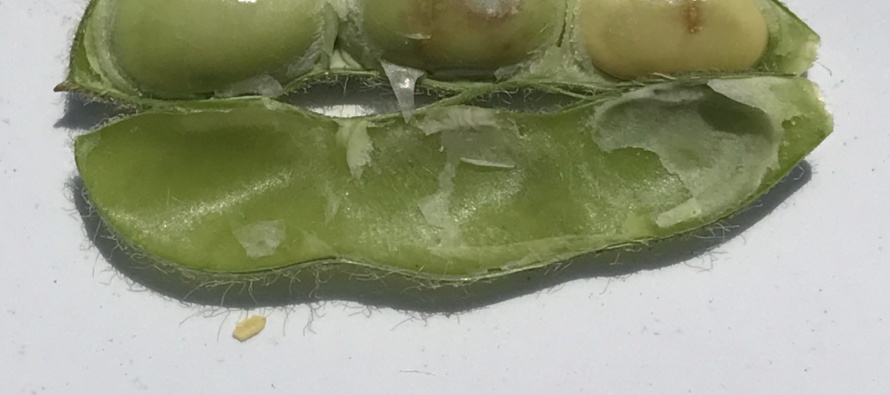When Can I Quit Treating Redbanded Stink Bug in Soybean?

Related Articles
- 2010 Soybean And Corn Variety Trial Data 3
- Mississippi Cotton Insect Situation of 2010: A Look Back 3
- Rice Insecticidal Seed Treatment Recommendations for Mississippi in 2011 0
Latest Tweets
As we suspected, now that the earliest planted soybeans are winding down on substantial acres and desiccants are being applied, we are seeing Redbanded Stink Bug (RBSB) make a move into later planted soybeans on wider scale. The number one question we are getting now is when can we quit spraying for them?
We have limited experience with this pest is MS, so we are relying heavily on the advice of our counterparts a t LSU who deal with this pest every year. First, lets review some stink bug facts on the traditional species we deal with in MS routinely.
Traditional Stink Bug Species in MS Soybeans (Southern Green, Green, and Brown)
- Threshold is 9/25 sweeps until R6 stage is reached. At R6 we can double the threshold and terminate treatment at R6.5, typically 7-10 days after R6.
- After R6 bushels per acre are not lost by stink bugs feeding, it is more about seed quality.
- However, rarely do we see quality reductions at the elevator from our traditional stink bug species after R6 even at astronomical numbers (much higher than the double threshold at R6).
- Essentially all insect control can be terminated at R6.5
Redbanded Stink Bug in Soybeans (From LSU correspondence)
- Threshold is 4/25 sweeps
- Cannot double threshold at R6
- Cannot terminate sprays at R6.5
- Can cause reduced test weight, reduced oil, reduced protein, and elevator dockage damage as late as R7 in soybean.
- Don’t walk away from these fields too early
Why are RBSB so much more damaging? This is a good question but there is no doubt it is true. We have personally witnessed this already this year even under low numbers. A study by Depieri and Panizzi (2010) in Brazil showed that the RBSB fed deeper into seeds and that the deleterious effects of their salivary enzymes was greater with this species than others causing significantly more seed damage than any other species tested. I know some have questioned the damage potential we have talked about with this pest. I would encourage you to pull some pods in fields where they have been present for a week or so, regardless of numbers, an open them up and take a look….

Again, we are conducting research currently in several locations around the state on this pest. In the absence of data, I would strongly suggest that we lean on the advice of our colleagues at LSU who have much more experience with this insect than anyone else in the region.
I would anticipate numbers to continue to increase in some areas much more rapidly as we funnel them down more and more into the greener beans that are left. The preference will be soybeans in late R5 to R6 stages.
Below is a table that shows the preharvest interval for some of the commonly applied insecticides that we target RBSB with. Because this pest is treated much closer to harvest, we need to be aware of these preharvest intervals.
| Insecticide | PHI (Pre harvest interval) |
| Acephate | 14 Days |
| Bifenthrin | 18 Days |
| Karate | 30 Days |
| Belay | 21 Days |
| Endigo | 30 Days |
Stink Bug Identification

- Green Stink Bug Adult
- Green Stink Bug Nymph
- Brown Stink Bug Adult
- Brown Stink Bug Nymph
- Southern Green Stink Bug Adult
- Southern Green Stink Bug Nymph
- Redshouldered Stink Bug Adult
- Redshouldered Stink Bug Nymph
- Redbanded Stink Bug Adult
- Redbanded Stink Bug Spine on Underside
- Redbanded Stink Bug Nymph
- Spined Soldier Bug Adult
- Spined Soldier Bug Nymph




Let me tell You a sad story ! There are no comments yet, but You can be first one to comment this article.
Write a comment